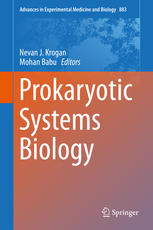

Most ebook files are in PDF format, so you can easily read them using various software such as Foxit Reader or directly on the Google Chrome browser.
Some ebook files are released by publishers in other formats such as .awz, .mobi, .epub, .fb2, etc. You may need to install specific software to read these formats on mobile/PC, such as Calibre.
Please read the tutorial at this link: https://ebookbell.com/faq
We offer FREE conversion to the popular formats you request; however, this may take some time. Therefore, right after payment, please email us, and we will try to provide the service as quickly as possible.
For some exceptional file formats or broken links (if any), please refrain from opening any disputes. Instead, email us first, and we will try to assist within a maximum of 6 hours.
EbookBell Team

5.0
70 reviewsThis book focuses on innovative experimental and computational approaches for charting interaction networks in bacterial species. The first part of the volume consists of nine chapters, focusing on biochemical and genetics and genomics approaches including yeast two hybrid, metagenomics, affinity purification in combination with mass spectrometry, chromatin-immunoprecipitation coupled with sequencing, large-scale synthetic genetic screens, and quantitative-based mass spectrometry strategies for mapping the bacterial physical, functional, substrate, and regulatory interaction networks needed for interpreting biological networks, inferring gene function, enzyme discovery, and identifying new drug targets.
The second part comprises five chapters, covering the network of participants for protein folding and complex enzyme maturation. It also covers the structural approaches required to understand bacterial intramembrane proteolysis and the structure and function of bacterial proteins involved in surface polysaccharides, outer membrane, and envelope assembly.
This volume concludes with a focus on computational and comparative genomics approaches, especially network-based methods for predicting physical or functional interactions, and integrative analytical approaches for generating more reliable information on bacterial gene function. This book provides foundational knowledge in the understanding of prokaryotic systems biology by illuminating how bacterial genes f
unction within the framework of global cellular processes. The book will enable the microbiology community to create substantive resources for addressing many pending unanswered questions, and facilitate the development of new technologies that can be applied to other bacterial species lacking experimental data.